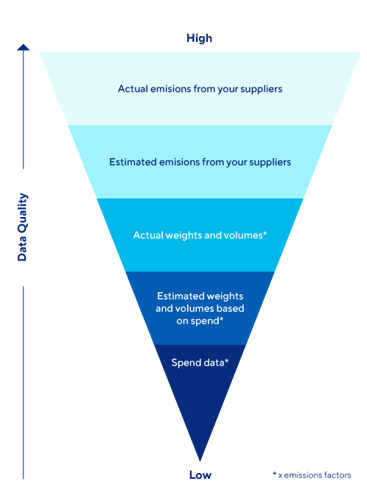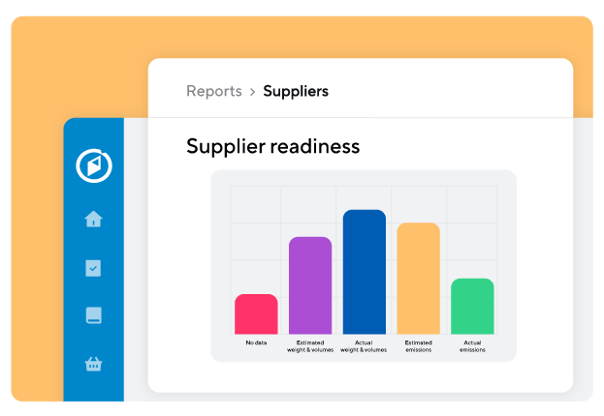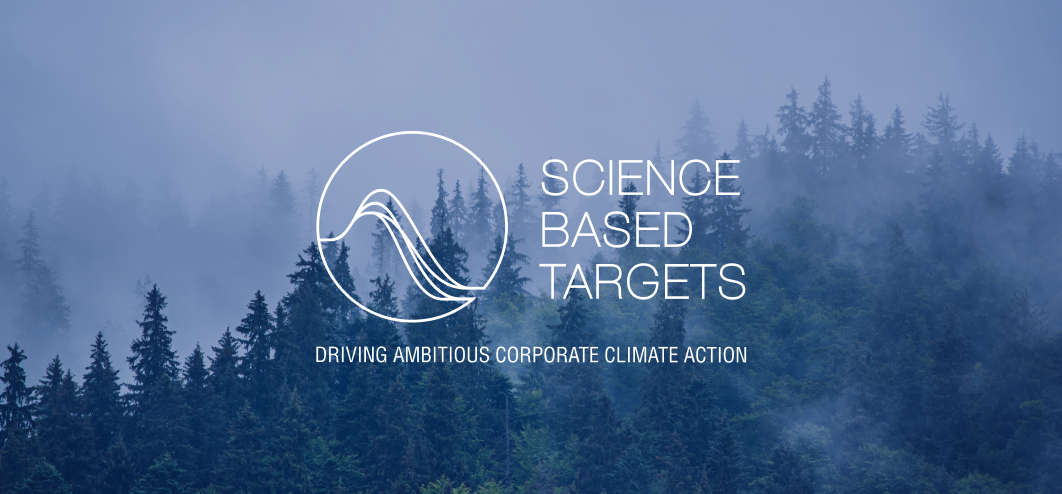Setting the stage for change
By 2030, the world’s greenhouse gas (GHG) emissions must drop by 45% and be well on the way to reaching net zero by 2050, rendering it a materially important issue for all businesses. Stakeholders such as investors and customers want companies to credibly communicate how they manage climate risk. In response, numerous companies have announced their commitment to achieving net zero goals.
One way to know whether or not these claims will achieve the required emissions cuts is by checking if the targets meet the standard of the Science Based Targets initiative (SBTi).
The SBTi is a globally recognised body which helps businesses validate and declare their emission reduction targets in line with the Paris Agreement to prevent the worst impacts of climate change and futureproof business growth. As such, the SBTi are considered by many to be the gold standard of carbon-related SMART goals.
In this blog, we aim to guide you through the process of setting a science-based target (SBT), which includes calculating your carbon emissions across Scope 1, 2, and 3 – notably, supply chain emissions data.
Start by listing your emissions
Before a target can be approved by the SBTi, you must understand your total carbon emissions. You need to know what is realistically achievable for both your business AND your suppliers (and by when).
- Calculate your Scope 1 (direct emissions from your own operations) and Scope 2 (emissions from purchased electricity, steam, heat and cooling) using the Greenhouse Gas (GHG) protocol and scope 2 guidance. Use available sector guidance and for heavy supply chain emissions such as food and drink. Data for these calculations will be easy to find in your company for example, the amount of fuel used on site (in Scope 1) and the amount of electricity purchased (Scope 2).
- Estimate your Scope 3 (emissions of everything else - from things bought (upstream) and used or wasted (downstream) within your value chain) using Scope 3 Evaluator. The standard and technical guidance with the Scope 3 Evaluator will help you understand specifics of each type of Scope 3.
To have an SBTi-approved target, Scope 3 emissions must be included if they are more than 40% of your total emissions. Scope 3 emissions typically account for more than 95% of most consumer goods companies overall footprint, of which the supply chain emissions account for around 80%. Therefore, tackling Scope 3 supply chain emissions by collaborating with suppliers is one of the main ways a business can reduce its negative environmental impact.
How to calculate Scope 3 supply chain emissions for SBTi
When it comes to calculating supply chain emissions for SBTi, you have two options; you can rely on possibly inaccurate data from actual or estimated spend and weight (to then convert into GHG emissions), or you can collect much more reliable data directly from your suppliers about GHG emissions.
Good quality Scope 3 emissions data is generally difficult to access as this part of the value chain tends to be out of your direct control. For companies with a large supply base, it can appear a rather complex challenge. Nonetheless, it is important to begin to engage with suppliers to be begin your journey to measuring and reducing your companies environmental impact. Within the context of SBTi, it will also ensure that you can set a realistic and achievable SBT and prioritise actions to tackle emissions and track reductions. Inaccurate and incomplete supplier and product data is common within retail and CPG. Therefore you want to avoid setting bold public targets based on estimated and potentially inaccurate data which is then converted into approximate GHG emissions.

However, demanding comprehensive emissions data from suppliers without understanding how ready they are to provide it can also halt progress and compound the problem. Blanket GHG supplier data collection exercises lead to low response rates and missing, incomplete, or inaccurate data recordings which can skew your benchmark and ability to track any tangible progress.
Begin your supply chain emissions data collection project with a supplier readiness survey to determine the quality of data you are going to be able to collect initially from your suppliers. For example, you might ask your suppliers if they can provide actual or estimated emissions data, and if they cannot do either of those yet, ask whether they can provide or validate actual weight and volume as opposed to estimations.

Segmenting your supply base like this makes it easier for you to tailor communications to different suppliers based on their maturity and capability, as well as provide support for those who are not yet able to provide accurate emissions data. Involving your suppliers early on in setting your SBT enables you to create momentum early on in the journey to reducing emissions; suppliers are engaged and aligned to your brand mission, you improve the relationships you have with your suppliers, and this paves the way for much faster progress towards whatever emissions reduction target you make.
Setting a science-based target with the SBTi
The SBTi tool calculates the amount of GHG emissions (Scope 1, 2 and 3) you must cut to achieve the 1.5°C Paris agreement.
The process to set and approve your target is relatively simple:
- Register online and send a letter of commitment. Your company is listed on the website and you have 24 months to submit your target.
- Develop an emissions reduction target. There is a straightforward how-to-guide to help you decide the methodology to use for your sector and other supporting documents. There is SBTi criteria to help you set your emissions boundaries and ambitions as well as different sector guidance documents. It is also important to take into account supplier readiness when developing an emissions reduction target – you need it to hit the SBTi criteria whilst also helping you identify what support you might need to provide suppliers to reach this target. It may also be helpful to ask a third party to check your calculations before submitting them to the SBTi.
- Submit your target to SBTi for validation and pay the fee.
- Communicate your target internally, to your customers, and most importantly to your suppliers. Have a look at the guidance and case studies to inspire you and make sure to avoid greenwashing. Your target will also be announced on the SBTi website along with 3,470 other proactive companies who represent $38 trillion.
- Disclose your progress - once you have submitted your target you need to update your progress annually. Making progress requires actively engaging suppliers in your goal, and disclosing your progress in an efficient way is best achieved via supplier dashboards and scorecards.
- Reduce your emissions!




